SLUSET2A may 2022 – july 2023 UCC27444-Q1
PRODUCTION DATA
- 1
- 1 Features
- 2 Applications
- 3 Description
- 4 Revision History
- 5 Pin Configuration and Functions
- 6 Specifications
- 7 Detailed Description
- 8 Application and Implementation
- 9 Power Supply Recommendations
- 10Layout
- 11Device and Documentation Support
- 12Mechanical, Packaging, and Orderable Information
Package Options
Mechanical Data (Package|Pins)
Thermal pad, mechanical data (Package|Pins)
- DGN|8
Orderable Information
6.8 Typical Characteristics
Unless otherwise specified, VDD = 12 V, INx = 3.3 V, ENx = 3.3 V, TJ = 25°C, no load



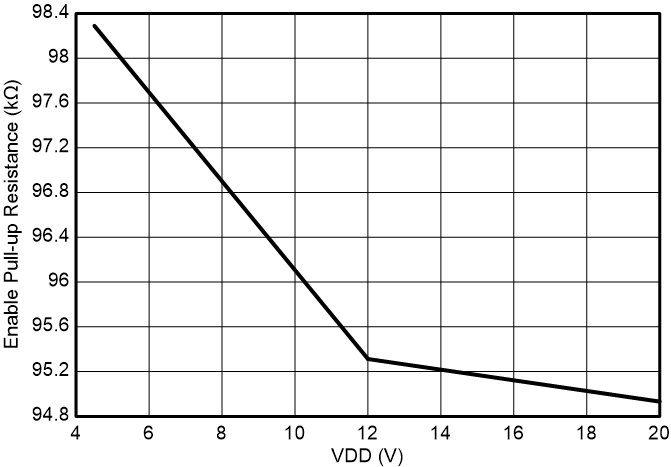

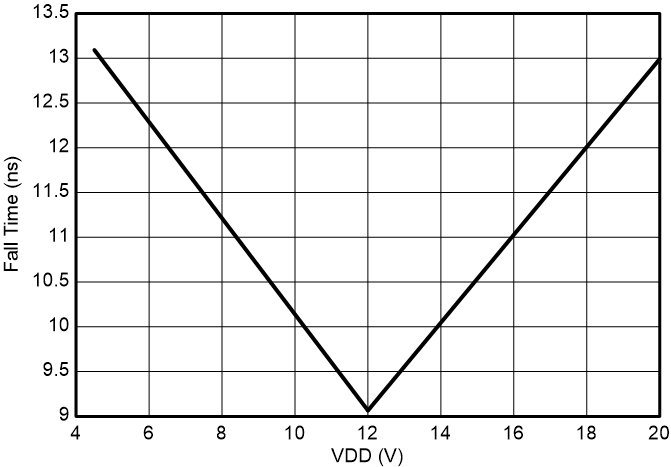
| CLOAD = 1.8 nF |
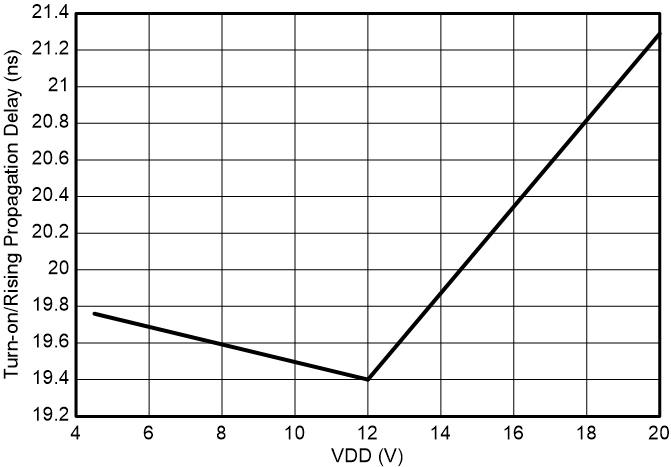
| CLOAD = 1.8 nF |

| CLOAD = 1.8 nF |
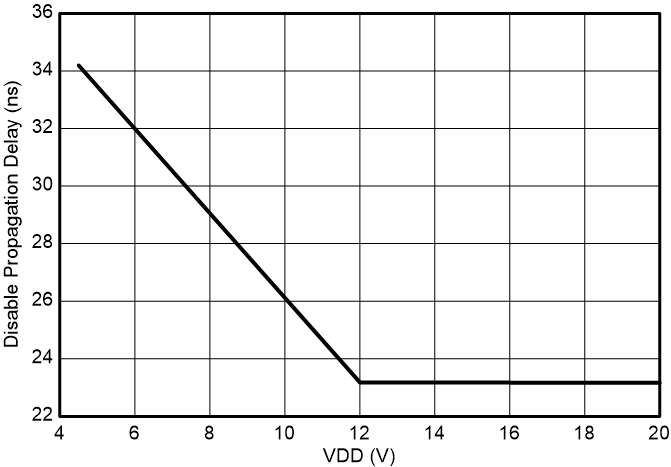
| CLOAD = 1.8 nF |
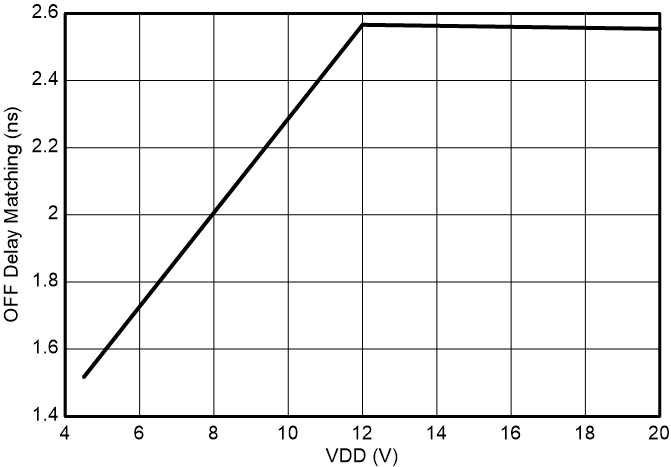
| CLOAD = 1.8 nF |
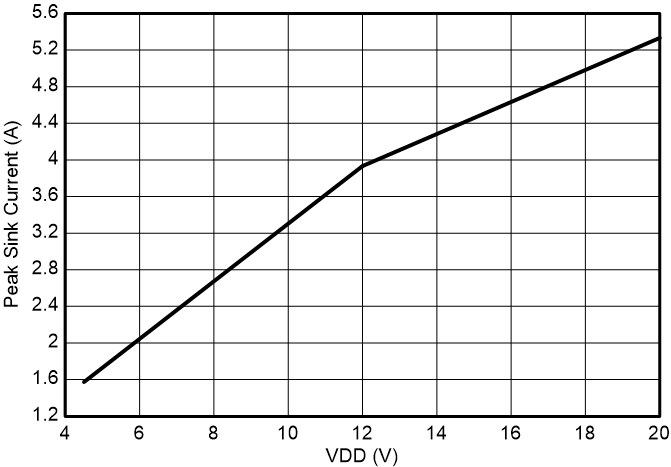
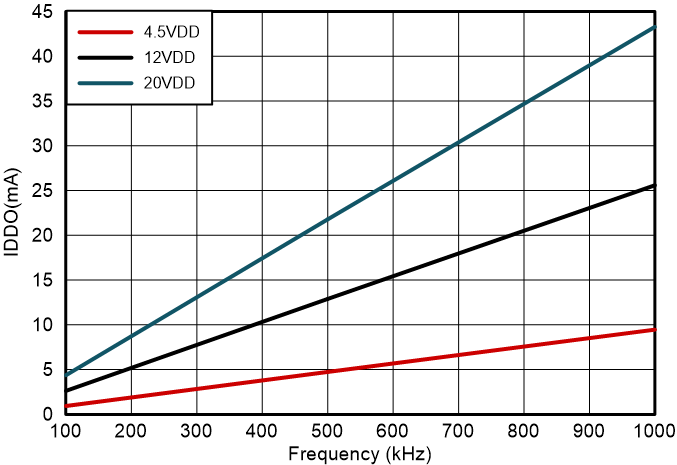

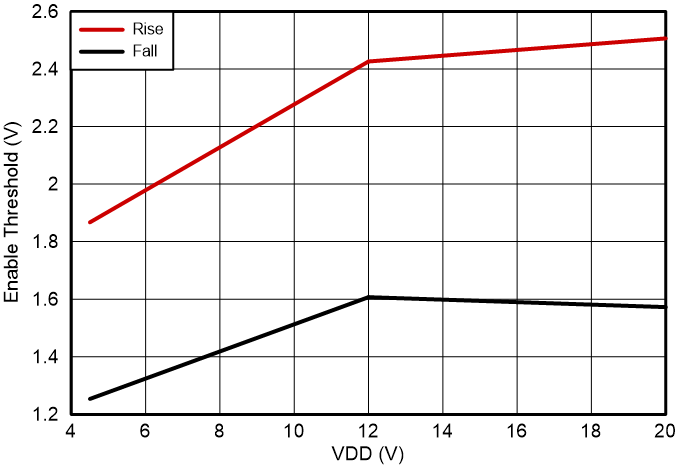

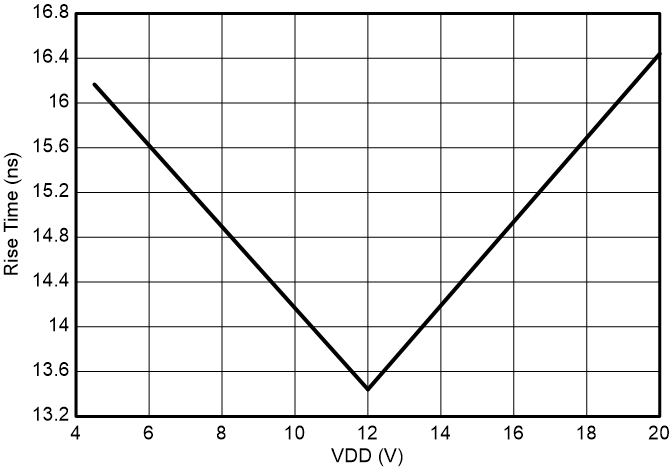
| CLOAD = 1.8 nF |
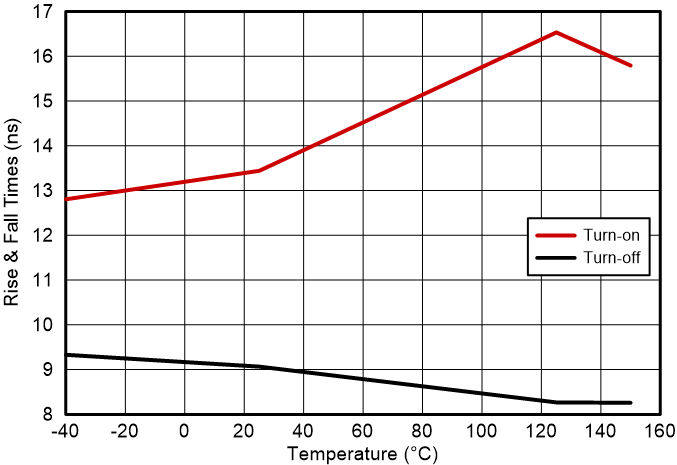
| CLOAD = 1.8 nF |

| CLOAD = 1.8 nF |
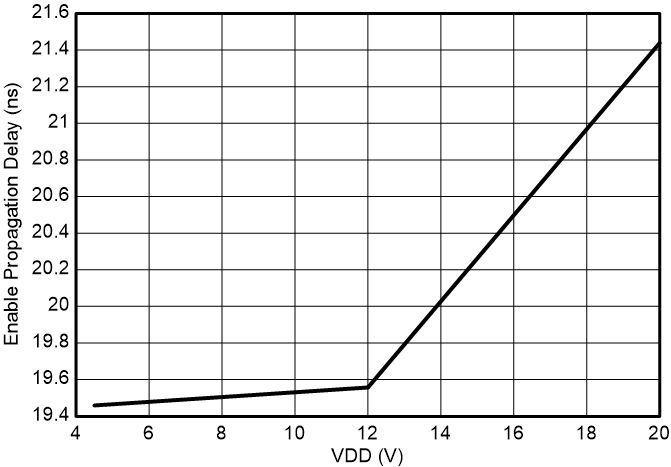
| CLOAD = 1.8 nF |

| CLOAD = 1.8 nF |
